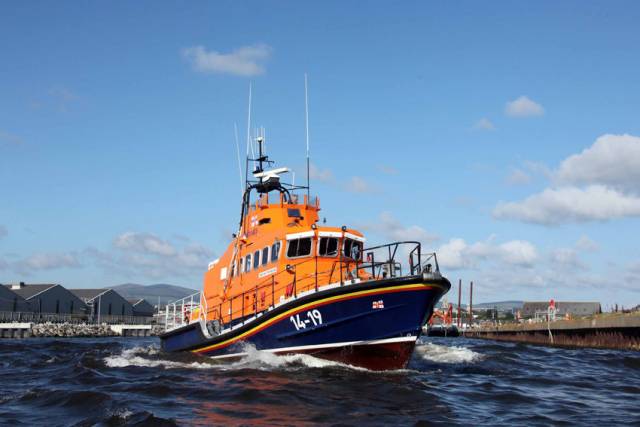It was a busy weekend for RNLI lifeboats in Arklow, Larne and Kilmore Quay which each had callouts over the Easter period.
Arklow RNLI launched on Sunday afternoon (21 April) to assist a jetski in difficulty following a launch request from the Irish Coast Guard at 3.15pm.
The volunteer lifeboat crew left their families on Easter Sunday to answer the callout, bringing the all-weather lifeboat Ger Tigchlearr just north of Arklow Harbour where the casualty vessel had been reported adrift and without power.
The jetski, with two people aboard, was quickly located off the back of Arklow's North Pier, dangerously close to the rocky shoreline.
The two people aboard were immediately recovered onto the lifeboat and a line was secured to the jetski to tow it back to shore.
In Larne, RNLI volunteers were called out twice on Sunday evening to people in difficulty.
In the first callout, both the all-weather and inshore lifeboats were called to aid two kayakers who had overturned near Browns Bay just off Islandmagee.
Larne RNLI launched into a calm sea at 5,45pm with the inshore lifeboat, Terry, tasked to bring the kayakers safely to shore, while the all-weather lifeboat Dr John McSparran was tasked to recover the kayaks left behind.
After a successful recovery of both casualties and their equipment, Larne RNLI helm Pamela Leitch noted: “The two kayakers were wearing buoyancy aids; they also remembered to stay with their kayaks which made it easier for us to identify them and bring them ashore.”
The second callout involved the all-weather lifeboat towing a 26ft sailing boat which had run aground at the East Maidens lighthouse.
One of the two people onboard had asked to dock close to the Maidens so they could have a look around. However, while they were the docked the tide ebbed and the boat was left on rocks.
The remaining crew member was able to use their VHF radio to call for assistance from Belfast Coastguard, who requested the launch of the all-weather lifeboat.
When Larne’s volunteers reached the boat, they found that it had moved off the rocks and that no damage had occurred to the hull.
However, it was suggested that the casualty boat follow the all-weather lifeboat into Larne to assess any further damage.
As both boats were making their way into the Port of Larne, a tow line was established as the casualty vessel was experiencing some engine troubles. The vessel was then towed to a mooring at East Antrim Boat Club.
Meanwhile, in Kilmore Quay, the local RNLI lifeboat was alerted by Dublin Coast Guard at 5.25pm that an 11m boat with two people on board had lost engine power three-and-a-half miles south of Bag-N-Bun Head to the west of Kilmore Quay.
Conditions were near calm at the time with restricted visibility due to coastal fog. Visibility was down to one tenth of a mile at times.
The volunteer crew made best speed towards the casualty vessel, arriving alongside twenty minutes later. A tow line was passed over and the vessel was towed back to Kilmore Quay, which took just under an hour to complete.
The four Easter Sunday callouts came after Saturday launches for Courtmasherry RNLI, to a Spanish-bound yacht in distress, and Carrybridge RNLI, to two boats in difficulty on Upper Lough Erne.
“Given the fantastic weather we’ve had this weekend, we’ve seen higher numbers of people coming back to the beaches and putting their boats and other craft back in the water, earlier than usual,” said Mark Corcoran, community safety officer at Arklow RNLI.
“We’d like to remind people to always respect the water, wear a lifejacket and carry a means of calling for help when going out on the water.”































































